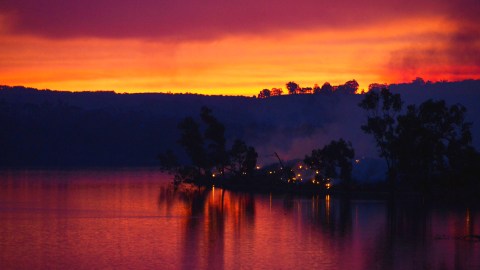Australian fires are being set by legendary pyromaniacal raptors

The aboriginal people of northern Australia have spoken of them for at least a century: “Firehawks” who carry fire through the sky, dropping it to the ground to spark flames that drive prey out of hiding. These creatures are even characters in certain Dreaming ceremonies. Indigenous author Phillip Waipuldanya Roberts wrote in his 1964 biography, “I have seen a hawk pick up a smouldering stick in its claws and drop it in a fresh patch of dry grass half a mile away, then wait with its mates for the mad exodus of scorched and frightened rodents and reptiles.” Inspired by Roberts’ account, researchers decided to look into these stories, talking to both indigenous and non-indigenous people, and a new study concludes they’re no myths. Firehawks are real.
The new insight is likely to help authorities deal with a major outbreak of brushfires, occurring during Australia’s current overwhelming heatwave. The depth of indigenous ecological knowledge has long been recognized, including what the study terms “fine-grained understandings of fire.” Even so, “Though Aboriginal rangers and others who deal with bushfires take into account the risks posed by raptors that cause controlled burns to jump across firebreaks, official skepticism about the reality of avian fire-spreading hampers effective planning for landscape management and restoration.” While humans engage in careful, science-based fire management for community safety, food production, and ecological purposes, the birds have had their own plans.
It appears at least three avian species qualify as the firehawks of legend:

Black Kite, Whistling Kite, and Brown Falcon (THE INTERNET BIRD)
The study finds there have been numerous reports of birds gathering along the fronts of raging fires, essentially foraging for burning sticks to grab in their talons and beaks. In general, people studying the behavior from afar tend consider it to be accidental, while up-close witnesses disagree: They’re pretty convinced the firehawks know exactly what they’re doing. The study offers this summary of the “fire-spreading” behavior as described by witnesses:
Raptors fly into active fires to pick up smoldering sticks in talons or beaks, transporting them up to a kilometer away and dropping them either in brush or in grass. Sticks may be from human cooking fires or from burning or smoldering vegetation. The imputed intent of raptors is to spread fire to unburned locations—for example, the far side of a watercourse, road, or artificial break created by firefighters—to flush out prey via flames or smoke. The behavior may occur once or repeatedly during the fire, by a single bird or by a small percentage of the overall raptors present. Attempts may be unsuccessful, with burning sticks dropped short of unburned areas or dropped but not igniting vegetation.
The study also includes accounts that explain why firehawks so excel at thwarting firefighters’ attempt to establish fire breaks: “When a fire burns into a creek line and burns out, brown falcons have also been observed collecting fire brands and dropping them on the other unburnt side of the creek in order to continue the fire.”
The authors of the study suggest controlled experiments with deliberately started fires and ornithologists on hand to more closely observe firehawks’ behavior in the hopes of better understanding these naturally occurring, flying arsonists who make the job of down-under firefighters’ so much more tricky. Dreamtime, indeed. More like nightmare-time.





